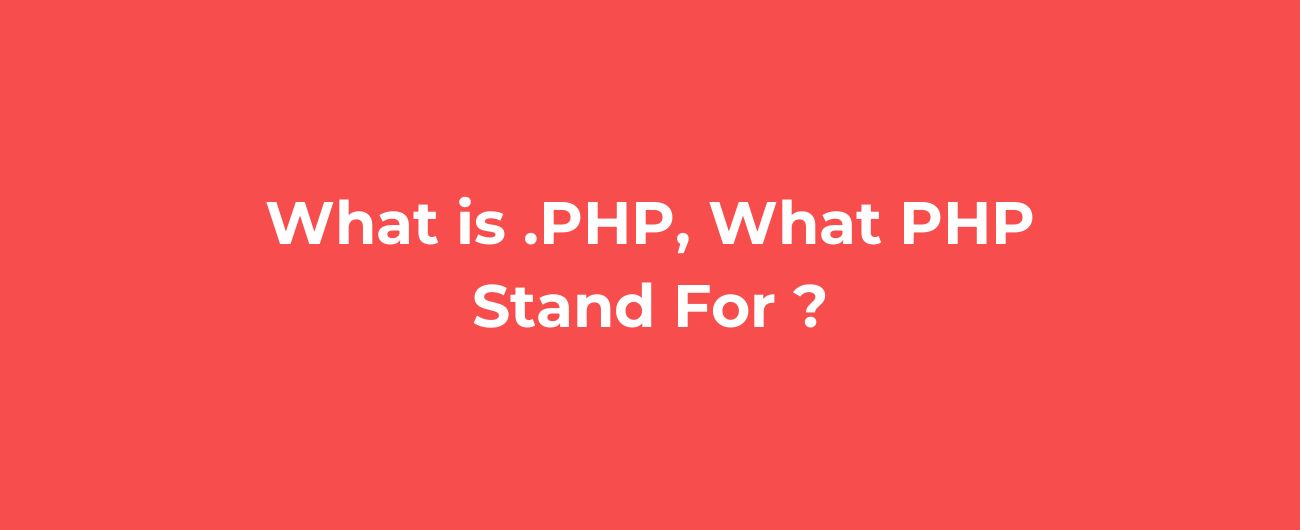
In the world of web development, you may have come across files with the .PHP extension. But what exactly is a .PHP file? In this article, we will explore the basics of .PHP files, what PHP stands for, and its significance in web development. PHP stands for Hypertext Preprocessor. Despite its name, PHP is not a markup language like HTML or XML. It is a server-side scripting language primarily used for web development. PHP allows developers to create dynamic web pages and interact with databases, making it a powerful tool for building robust and interactive websites. When a web browser requests a .PHP file, the web server processes the PHP code within the file and generates HTML output. This HTML output is then sent back to the browser, which displays the final web page to the user. The ability to embed PHP code within HTML is one of the key features that sets PHP apart from other programming languages. PHP offers several advantages that make it a popular choice among web developers: .PHP files are commonly used for various purposes in web development, including: To give you a better understanding of how PHP code looks, here are a few examples: This code assigns the value "John" to the variable $name and then displays the message "Hello, John!" using the echo statement. This code calculates the sum of two numbers (5 and 10) and displays the result as a sentence: "The sum of 5 and 10 is 15." A: PHP files have the .PHP file extension. This extension tells the web server that the file contains PHP code that needs to be processed before being sent to the browser. A: Yes, PHP code can be embedded within HTML code using special delimiters (<?php and ?>). This allows for dynamic content generation and interaction with databases. A: Yes, PHP is a programming language. It is specifically designed for server-side web development and is widely used for creating dynamic websites and web applications. A: Yes, PHP is a cross-platform language, which means it can run on various operating systems, including Windows, macOS, Linux, and more. A: PHP has a relatively easy learning curve, especially for those with prior programming experience. Its syntax is similar to other C-style languages, making it accessible for beginners. A: Yes, there are alternative server-side scripting languages, such as Python, Ruby, and Node.js. Each language has its own strengths and use cases, so the choice depends on the specific requirements of the project. A: PHP is primarily used for server-side web development and is not commonly used for mobile app development. However, PHP can be used in conjunction with frameworks like React Native or Flutter to build hybrid mobile apps. A: PHP itself is a secure language, but the security of a PHP application depends on how it is coded and the precautions taken by the developer. Following best practices, such as input validation and secure database handling, is essential for building secure PHP applications. A: Yes, PHP can be used in conjunction with other programming languages. For example, you can use PHP to handle server-side processing and JavaScript to handle client-side interactions, creating a dynamic and interactive web application. A: Yes, PHP is used in many large-scale web applications, including popular websites like Facebook and Wikipedia. PHP's scalability and performance have improved over the years, making it suitable for handling high-traffic websites. In conclusion, .PHP files are an integral part of web development, allowing developers to create dynamic and interactive web pages. PHP, which stands for Hypertext Preprocessor, is a server-side scripting language that enables the processing of PHP code on the server before sending the HTML output to the browser. With its ability to embed PHP code within HTML, PHP offers flexibility and power in building web applications. Whether you are a beginner or an experienced developer, understanding .PHP files and PHP's capabilities is essential for creating modern and engaging websites. So dive into the world of PHP and unlock the potential of dynamic web development!What is .PHP? | PHP File Format Explained
Introduction to .PHP Files
What Does PHP Stand For?
How Does PHP Work?
Why Use .PHP Files?
Common Uses of .PHP Files
Examples of PHP Code
<?php
$name = "John";
echo "Hello, " . $name . "!";
?>
<?php
$num1 = 5;
$num2 = 10;
$sum = $num1 + $num2;
echo "The sum of " . $num1 . " and " . $num2 . " is " . $sum . ".";
?>
Frequently Asked Questions
Conclusion